Igneous rocks were once hot liquids that had a range of chemical compositions. On coming near the surface, the liquids cooled at different rates. Very fast cooling results in glasses (obsidian). Slower cooling, typical of most volcanic rocks, results in small grain sizes. Very slow cooling, typical of plutonic rocks deep underground, results in large grain sizes (at least large enough to see). The large variety of igneous rocks that we see are mostly the result of initial liquid composition, and cooling rate.
Mineral types, as usually grouped for igneous rocks
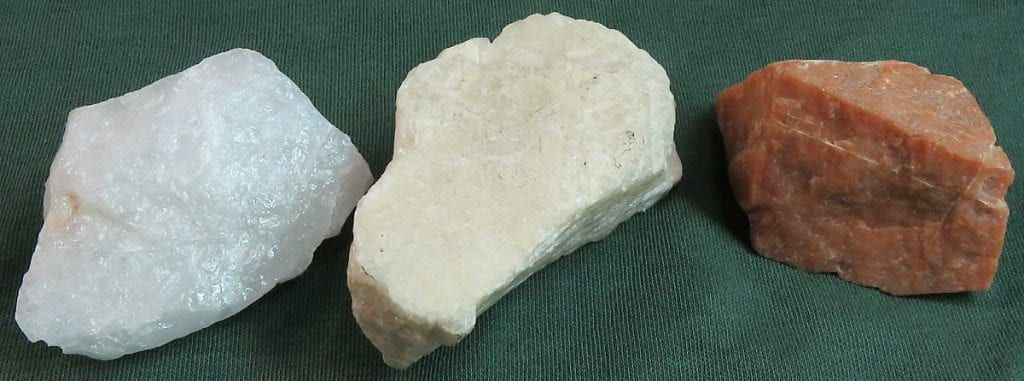
Felsic minerals These are generally light in color and have low density. They have high concentrations of one or more of silica, sodium, aluminum, and potassium. These minerals are low in iron, magnesium, and calcium.
Left: quartz
Middle: albite
Right: orthoclase

Mafic minerals These are generally dark in color and have high density. They are characterized by high concentrations of some combination of iron, magnesium, calcium, and titanium. They tend to have low concentrations of silica, sodium, aluminum, and potassium.
Top-left: pyroxene
Top-middle: biotite
Top-right: olivine
Bottom-left: hornblende
Bottom-right: garnet
How do you identify such tiny grains?
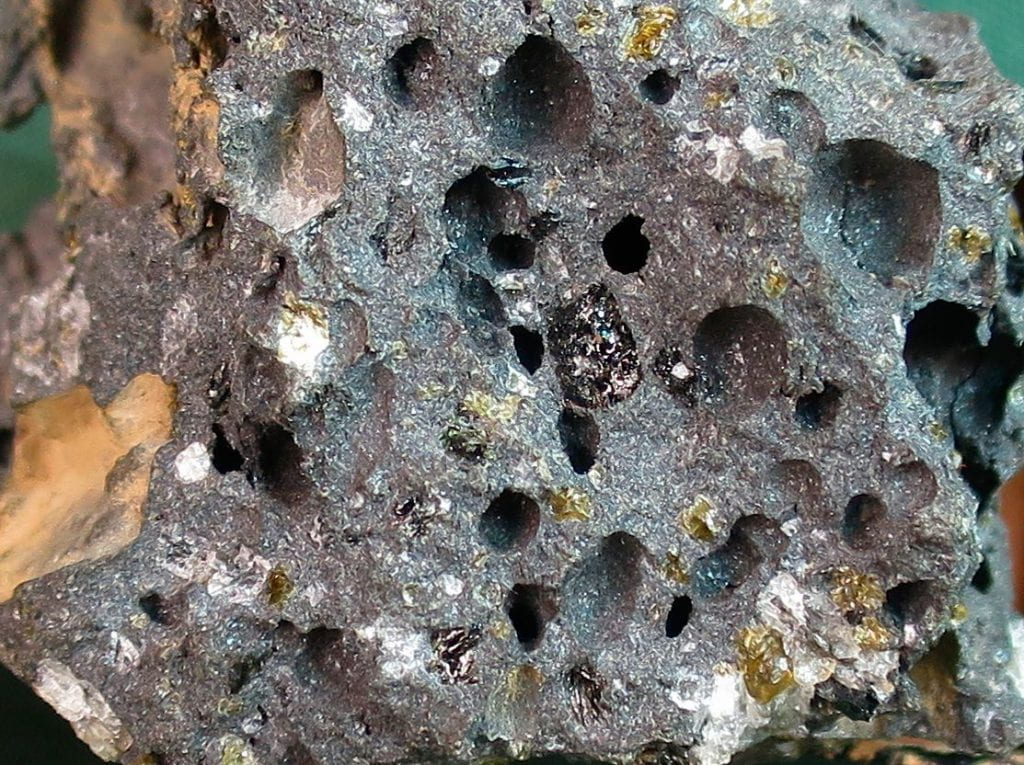
First, look closely with a hand lens or microscope. For visible crystals, color is the best property for a first guess. Then use other properties, such as how shiny the cleavage surfaces are (if any), and luster (metallic or nonmetallic).
This is a basalt lava from Iceland. Visible crystals include brownish-green olivine, black pyroxene, and white plagioclase, with empty gas bubbles. The dark-gray matrix was liquid at the time of eruption, but crystallized to fine-grained basalt. The minerals in the matrix are too small to identify, but the overall dark matrix color indicates that it is rich in mafic minerals.
In igneous rocks, large crystals surrounded by a finer-grained matrix are called phenocrysts. The texture of a rock with a lot of phenocrysts is called porphyritic.
Examples of volcanic rocks (quickly-cooled, fine-grained or glassy)
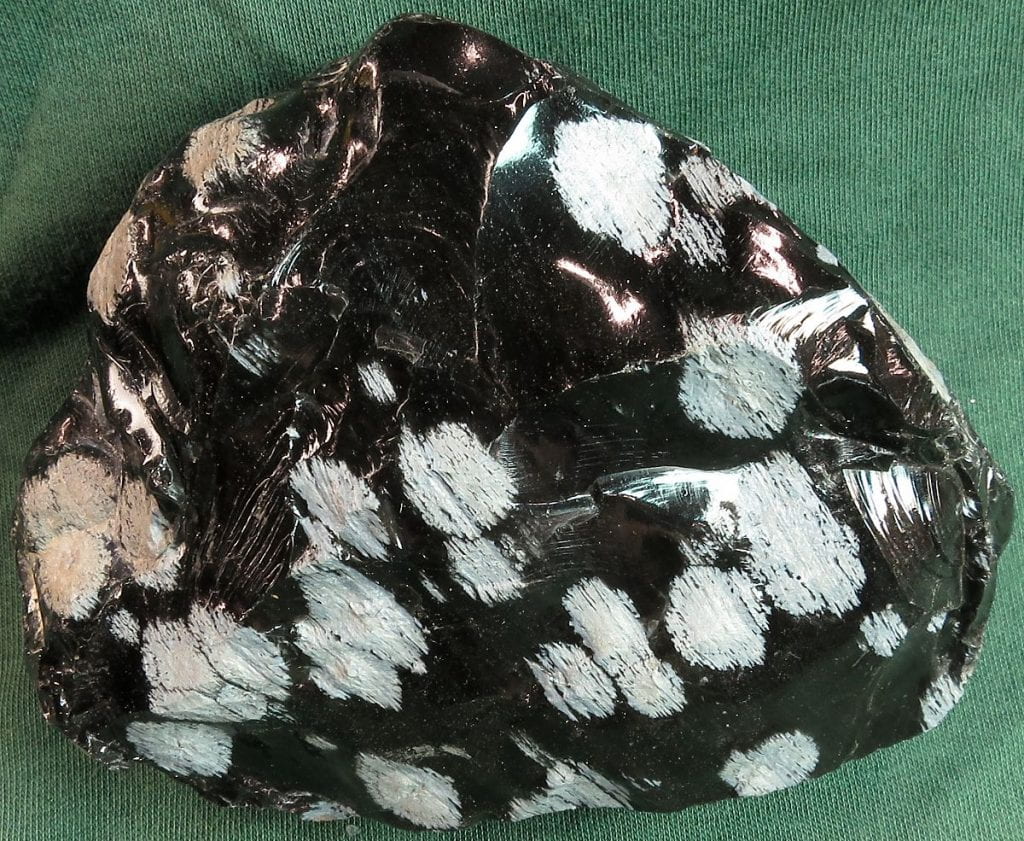
Obsidian
Volcanic liquid that cooled so fast that it could grow few or no crystals, and so quenched to a glass. The white patches contain tiny, long, thin feldspar crystals that grew rapidly during cooling from the patch centers. Some call this snowflake obsidian.

Obsidian
Brown and black glass, with characteristic surface fractures. Some call this type tiger obsidian.
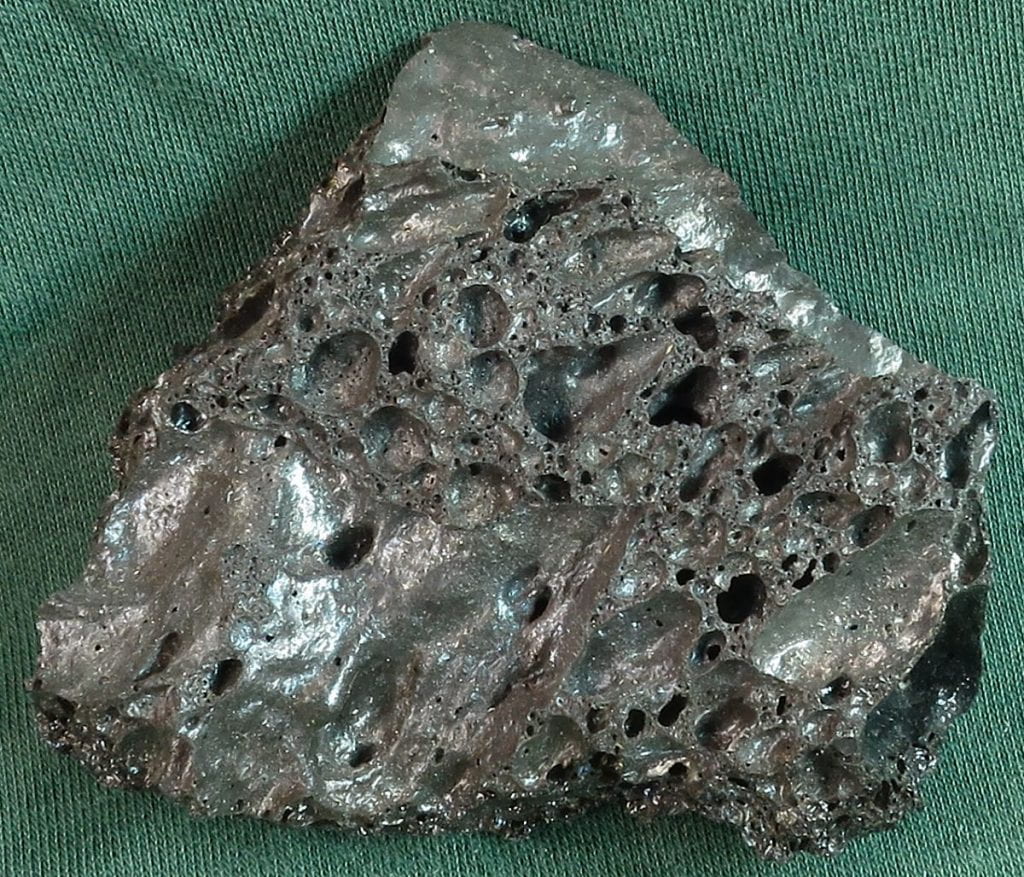
Obsidian
This was foamy, molten rock when it was thrown into the air during an eruption. In the cold air it froze mostly to glass.

Scoria
Broken pieces of vesicular volcanic rock, in this case a basalt. The crystals are too small to identify so the basalt rock type is inferred from its dark color on broken surfaces. The reddish color is caused by high-temperature oxidation of iron in the lava to hematite, as it flew through the air. The vesicles (bubbles) form as dissolved gases come out of solution from the original silicate liquid.

Basalt
A dark, fine-grained, phenocryst-free rock. The crystals are too small to identify, so the basalt rock type is inferred from its dark color, which indicates that it is rich in mafic minerals.

Porphyritic basalt
This example has abundant olivine phenocrysts, with smaller amounts of white plagioclase. There are lots of small bubbles, but no big ones.

Andesite
This volcanic rock has a fine-grained gray matrix enclosing long, black hornblende phenocrysts. The matrix grains are too small to identify.

Porphyritic andesite
This example has many phenocrysts of white plagioclase, and fewer black hornblende crystals.
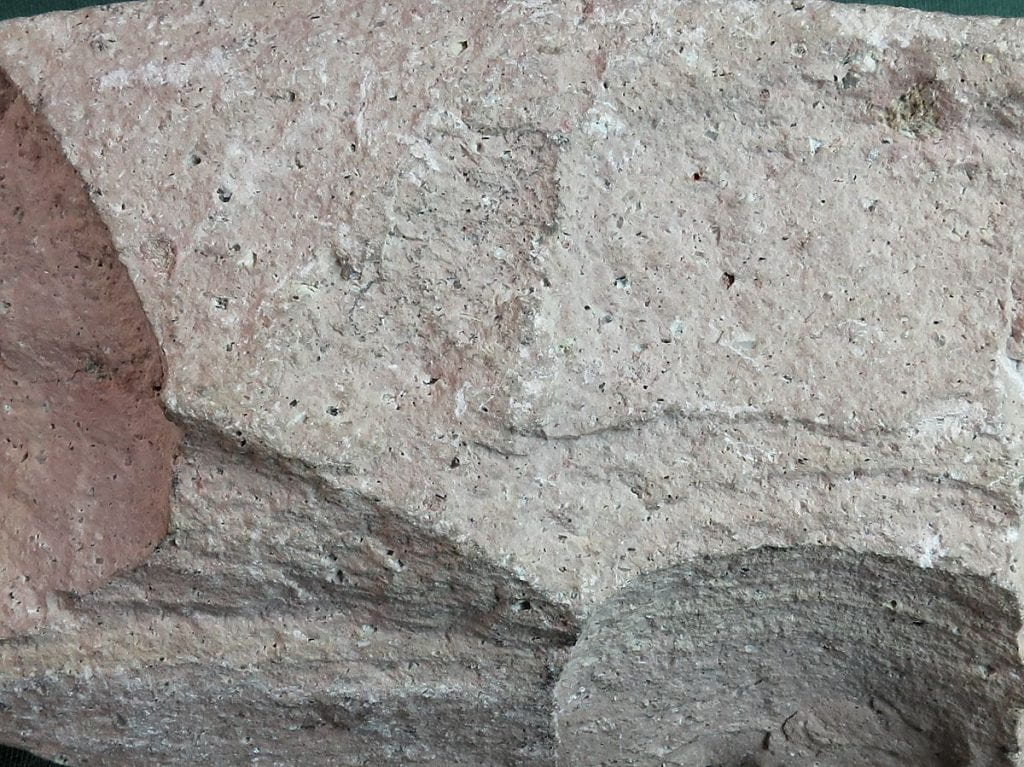
Rhyolite
This light-pink rhyolite is rich in silica, with lots of quartz and feldspars. Most crystals are too small to see, but the light color indicates that the rock is rich in felsic minerals. There are some little gas bubbles, but few phenocrysts.
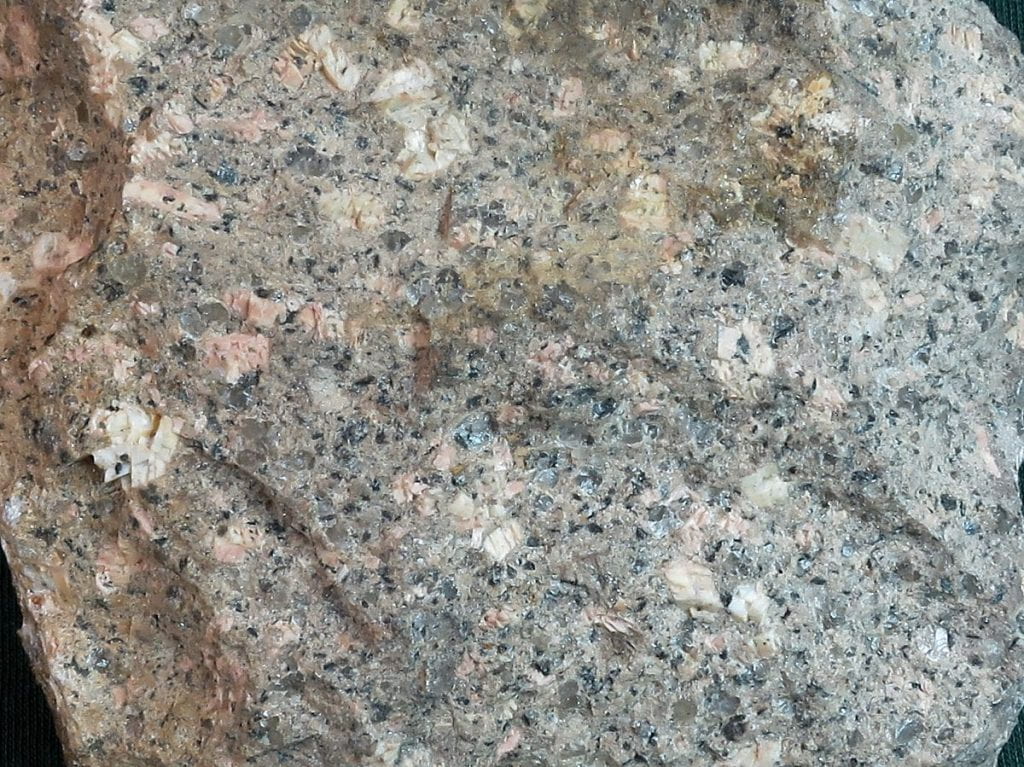
Porphyritic rhyolite
This rock has loads of pink orthoclase and white albite phenocrysts, and many smaller ones of quartz. The matrix is very fine-grained and light-gray, making up only about 40% of the rock.
Examples of plutonic rocks (slowly-cooled, coarse-grained)
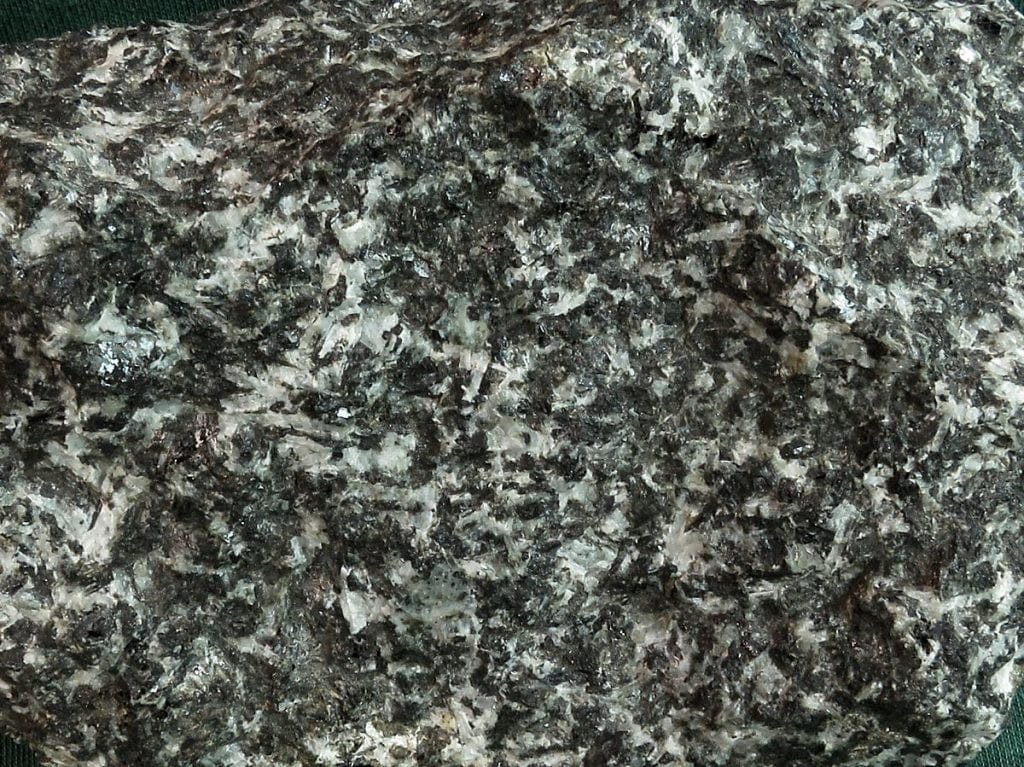
Gabbro
An overall dark, coarse-grained rock with identifiable crystals of plagioclase and dark pyroxene. Even-grained with no phenocrysts.

Gabbro
Another dark rock with grayer plagioclase and lots of dark pyroxene.
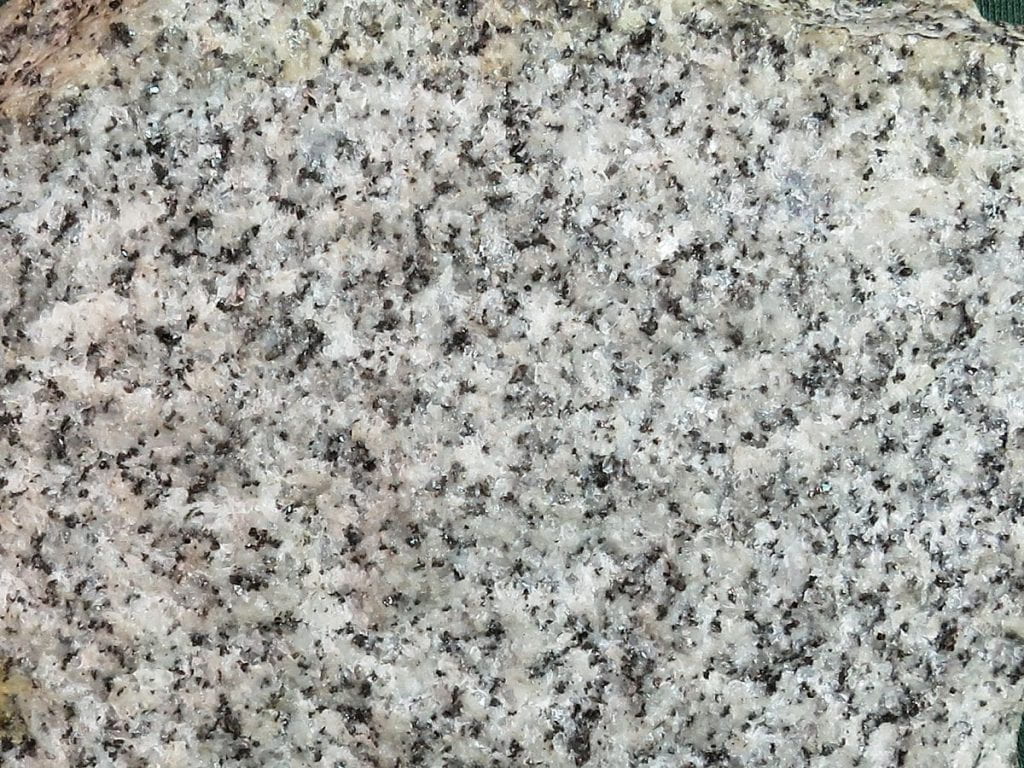
Diorite
This is a relatively fine-grained rock, containing white albite, gray-glassy quartz, and black flakes of biotite.
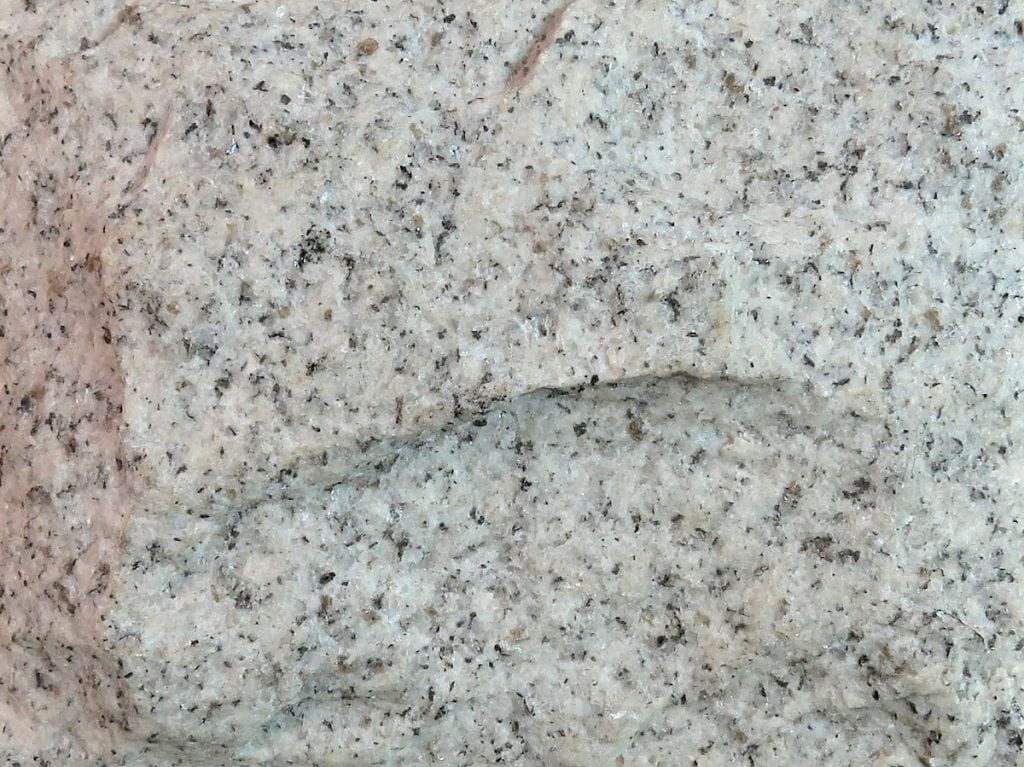
Diorite
This example has fewer mafic mineral grains, which include biotite and hornblende. If you look with a microscope, biotite has mirror-like cleavage surfaces, but those on hornblende are rough and dull.

Granite
Relatively fine-grained with an even grain size. Pink orthoclase, is abundant, as is gray, glassy quartz, and there is some albite, too.

Granite This granite is coarser grained, with very large, pink orthoclase phenocrysts set in a finer-grained matrix of biotite, quartz, albite, and small orthoclase crystals.
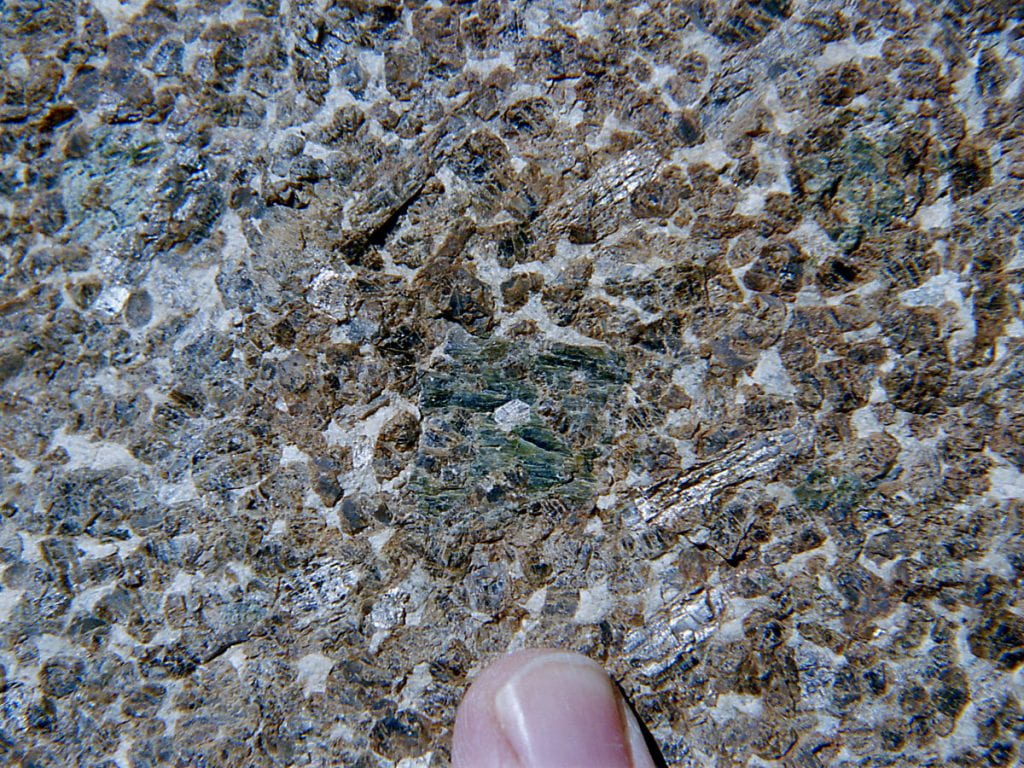
Ultramafic rock
The word “ultramafic” means very mafic, more mafic than any normal mafic rock that crystallized from a liquid, like basalt. In this case, early phenocrysts of brown pyroxene settled out from the less-dense liquid, accumulating in a layer on the magma chamber floor. Later, white plagioclase and green pyroxene (a different kind) crystallized from trapped liquid in the pore space between the brown crystals.
Where to the magmas for igneous rocks come from?
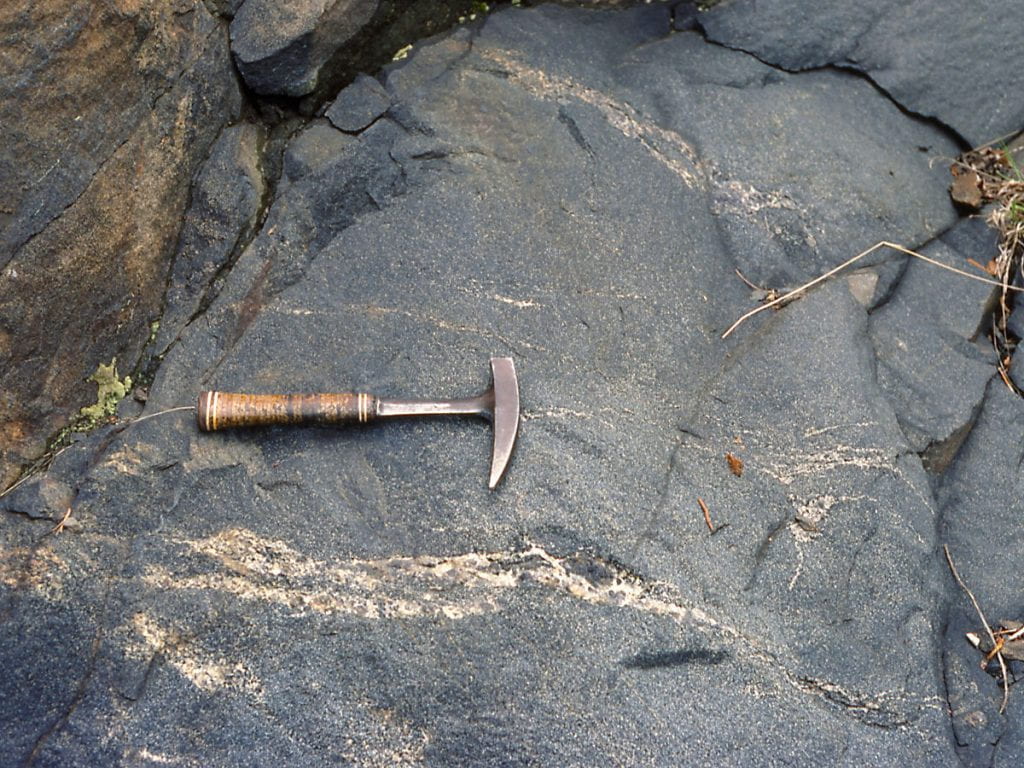
First, deep in the Earth, rocks are metamorphosed to temperatures high enough to start melting. Here, these amphibolites (metamorphosed basalts) were hot enough to melt a little bit. The liquid was originally on grain boundaries, but as the rock deformed, fractures opened up into which the liquid migrated. The liquid crystallized to form the thin, light-colored streaks and pods you see here. In this case, the magma never went farther, and it crystallized in the fractures during cooling.
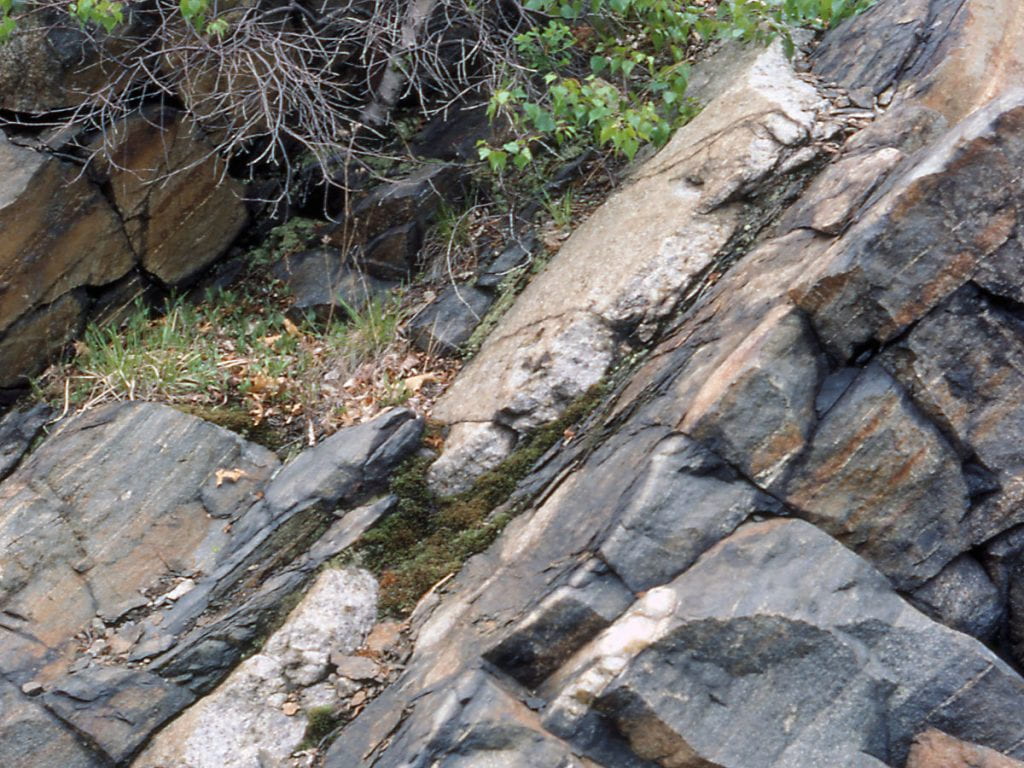
If the amount of melting is enough, the low-density liquid in grain boundaries and fractures will start to rise and coalesce. Eventually, they can fracture the surrounding rock to form small dikes, like this one.
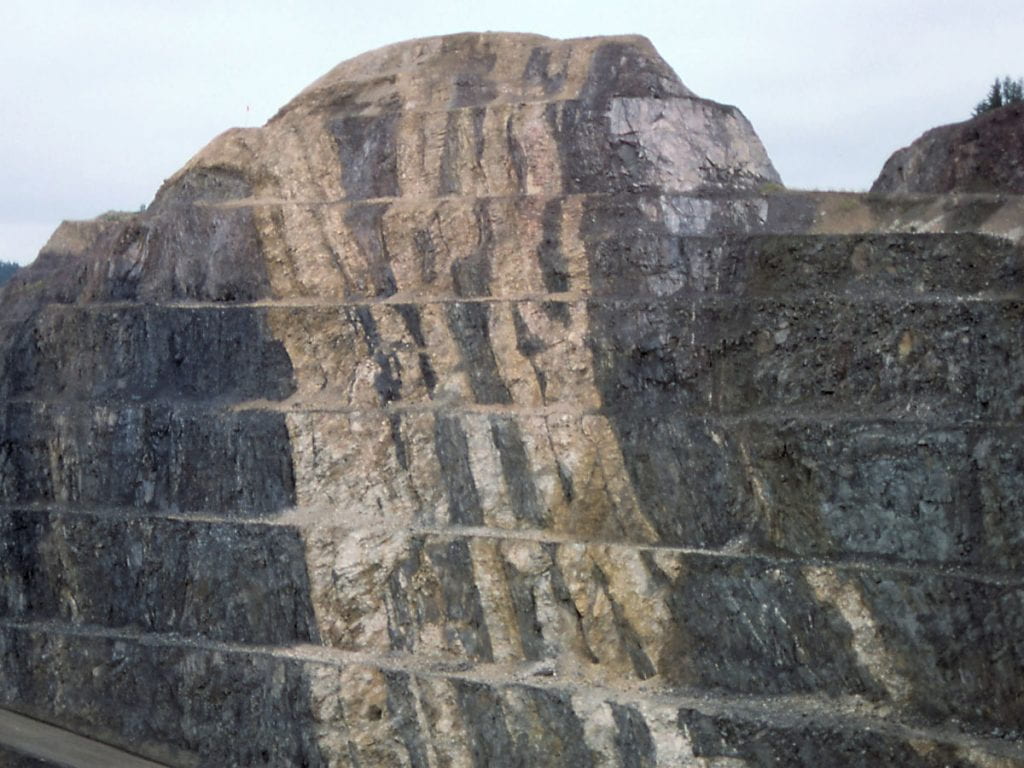
As the magmas continue to coalesce, the dikes become larger, carrying more magma upward.

Eventually, some of the magma may reach the surface. In the middle of this image is a small lava flow, with a feeder dike underneath it. Below the flow, cut by the dike, are older volcanic layers. Above the flow are younger volcanic layers. Most of the volcanics above and below are pyroclastics, made of hot fragments erupted from violent eruptions. This is in Organ Pipe National Monument, Arizona.
